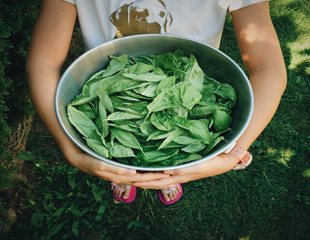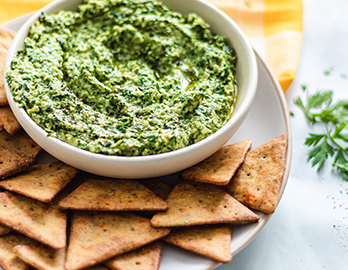#1 Buy in Bulk
.png.aspx)
An easy way to lower your waste amounts is purchasing some of your favorite foods like coffee beans, dried fruits, nuts, seeds and whole grains in bulk. When buying in bulk, be sure to bring your own containers to fill. Some great go-to options include recycled glass jars, mason jars, reusable zip block bags, and any other reusable containers you may have.
#2 Choose Local Farmers and Growers
When grocery shopping, focus on supporting small family farms and local brands found in your community. Visit the farmer’s market and local grocery stores to support farmers and growers from your local community or those nearby. Ask questions and learn more about where your food is coming from and how it’s grown so you can become a more conscious consumer.
Shopping from home? Support local growers or markets through grocery delivery where possible, or sign up for a CSA box from a local farm.
#3 Grow Your Own

Eating eco-consciously is easy when you are growing your own garden. Whether you have a backyard garden or a few herbs on your kitchen windowsill, select your favorite fruits, herbs, and vegetables and channel your green thumb so you can enjoy garden fresh produce all season long. If you don’t have the space to grow your own backyard garden, look into local options like renting a garden plot at a
community garden or research a
CSA.
#4 Reduce, Reuse and Recycle
Eating eco-consciously doesn’t only require us to look at what foods we are eating, but what type of packaging is used. When purchasing your favorite foods like
brownies and
crackers, remember to flatten and recycle the boxes. If you prefer to do all of your
grocery shopping online, consider placing all of your online orders from the same website, that way you are only getting items shipped to you in one box instead of ordering food from multiple websites, which means more boxes. You can even focus on creating a plastic-free kitchen by incorporating a few practices like:
- Ditch plastic wrap like cling wrap and saran wrap and opting for beeswax paper
- Elevate paper napkins for reusable cloth napkins
- Swap plastic water bottles for reusable water bottles
- Upgrade plastic straws for metal straws
- Use canvas grocery bags and reusable mesh produce bags
#5 Repurpose Food Scraps

When eating eco-consciously, think twice before tossing your food scraps in your kitchen’s compost pile and consider
repurposing your food scraps. Food scraps like bruised berries, broccoli stalks, carrot tops, coriander roots, kale stems, onion skins and radish leaves are all perfect additions to recipes like
salads, sauces, smoothies, soups and stir fries.
#6 Source Ingredients Mindfully
When reviewing your nutrition labels and
certifications, look for ingredients that are sourced mindfully. We believe that if you don’t recognize an ingredient, then chances are your body won’t either, which is why we stick to delicious,
real-food ingredients like almond flour, chia seeds, eggs and honey and avoid using artificial ingredients like
natural flavors.
#7 Think Sustainably
When eating eco-consciously, consider every step of the food making process and use your purchasing power to support sustainable food options like eating more plants and enjoying sustainable seafood.
When cooking up your favorite recipes, you may consider things like
diets, food certifications, ingredients, labels and
nutritional buzzwords, but remember to keep in mind how your food choices impact the Earth and our environment. Eating eco-consciously doesn’t have to be challenging or complicated. Keep eco-conscious eating simple with these seven ideas.
Tag us
@SimpleMills so we can see how you eat eco-consciously.